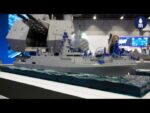Australia and Thailand have concluded their biennial bilateral air combat exercise, Thai Boomerang 2025, held at Korat Royal Thai Air Force Base. The drill brought together the Royal Australian Air Force’s (RAAF) F/A-18F Super Hornets and the Royal Thai Air Force’s (RTAF) JAS 39C/D Gripens for two weeks of intensive aerial training aimed at enhancing interoperability in the Indo-Pacific region.
Exercise Thai Boomerang 2025: Scope and Objectives
Exercise Thai Boomerang is a long-standing bilateral engagement between the RAAF and RTAF that focuses on advanced air combat tactics, joint mission planning, and operational coordination. The 2025 iteration ran from late August to early September at Korat RTAFB in central Thailand. It involved over 150 Australian personnel from No. 1 Squadron (RAAF Base Amberley) alongside their counterparts from Wing 7 of the RTAF.
The exercise included:
- Air-to-air combat engagements
- Offensive counter-air (OCA) missions
- Defensive counter-air (DCA) scenarios
- Combined mission planning cells
- Tactical data link integration using Link-16
The primary goal was to improve tactical interoperability between dissimilar platforms—namely the twin-engine Boeing F/A-18F Super Hornet multirole fighter operated by Australia and the Swedish-built Saab JAS 39C/D Gripen flown by Thailand. The exercise also served as a platform to enhance mutual understanding of rules of engagement (ROE), threat assessment protocols, and command-and-control procedures.
Platform Capabilities: Super Hornet vs. Gripen C/D
The participation of two distinct fourth-generation fighter platforms offered valuable dissimilar air combat training (DACT). The RAAF’s F/A-18F is a carrier-capable multirole fighter equipped with AESA radar (AN/APG-79), AIM-120 AMRAAMs for BVR engagements, AGM-154 JSOWs for precision strike, and integrated electronic warfare systems. It has a two-seat cockpit configuration ideal for complex strike coordination roles.
The RTAF’s JAS 39C/D Gripen—operated from Wing 7 in Surat Thani—is a lightweight multirole fighter known for its agility, cost-effectiveness, and network-centric warfare capabilities. Equipped with PS-05/A pulse-Doppler radar, IRIS-T short-range missiles, Meteor BVRAAMs in later upgrades (though not confirmed for the current fleet), it integrates seamlessly into NATO-standard Link-16 networks. The D variant offers tandem seating for pilot training or mission coordination.
This combination allowed both forces to practice DACT scenarios simulating peer-level threats while refining multi-platform engagement strategies under realistic conditions.
C4ISR Integration and Tactical Data Exchange
A key focus area during Exercise Thai Boomerang was command-and-control integration through tactical data links—particularly Link-16. Both air forces utilized airborne early warning assets to support situational awareness during large force employment missions.
While Australia did not deploy its E-7A Wedgetail AEW&C aircraft during this iteration due to concurrent commitments in Exercise Pitch Black in Darwin earlier in August, Thailand’s Saab Erieye AEW system—mounted on Saab 340 platforms—provided airborne surveillance coverage throughout the exercise. This allowed real-time data sharing between participating fighters via Link-16 terminals for coordinated intercepts and threat picture fusion.
This level of C4ISR integration is crucial given increasing emphasis on joint all-domain operations across Indo-Pacific partners amid rising regional tensions involving China’s assertive posture in contested airspace zones such as the South China Sea.
Strategic Significance in Regional Security Architecture
Bilateral exercises like Thai Boomerang play an increasingly important role in shaping regional deterrence postures under frameworks such as Australia’s Defence Strategic Review (DSR) released in April 2023. The DSR emphasized strengthening partnerships with Southeast Asian nations through defense diplomacy initiatives that include recurring joint drills.
Thailand remains a key strategic partner under Australia’s Defence Cooperation Program (DCP), which supports over A$20 million annually across military education exchanges, logistics cooperation, maritime security dialogues—and joint exercises like this one. For Bangkok, participation reinforces its balancing strategy between U.S.-aligned partners like Australia while maintaining economic ties with China.
Operational Lessons Learned and Future Outlook
According to post-exercise statements by Group Captain Matthew McCormack of No.1 Squadron RAAF, both sides gained valuable insights into operating dissimilar aircraft under high-tempo conditions involving contested electromagnetic environments simulated via onboard EW suites rather than external jamming pods or ground-based emitters.
The integration challenges encountered during mission planning—particularly around ROE harmonization and deconfliction procedures—will inform future iterations of Thai Boomerang as well as larger multilateral exercises such as Pitch Black or Cobra Gold where both nations participate alongside U.S., Japan, Singaporean forces among others.
The next iteration of Exercise Thai Boomerang is expected in late 2027 with potential inclusion of newer platforms such as Australia’s forthcoming MQ-28 Ghost Bat loyal wingman UAV or upgraded Gripen E variants if procured by Thailand—a possibility currently under study by the RTAF modernization board.
Conclusion
The successful completion of Exercise Thai Boomerang underscores growing defense ties between Canberra and Bangkok amid shifting strategic dynamics across Southeast Asia. Beyond tactical gains from DACT sorties involving Super Hornets and Gripens lies a broader commitment to interoperable force projection capabilities that underpin collective security frameworks across the Indo-Pacific theater.








